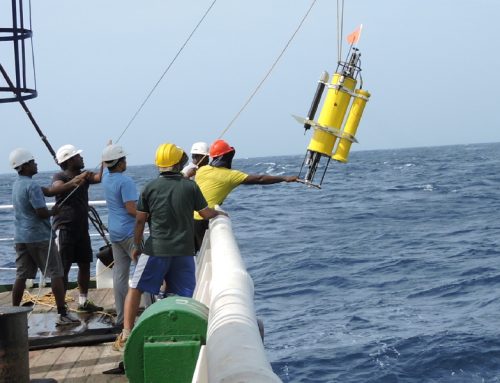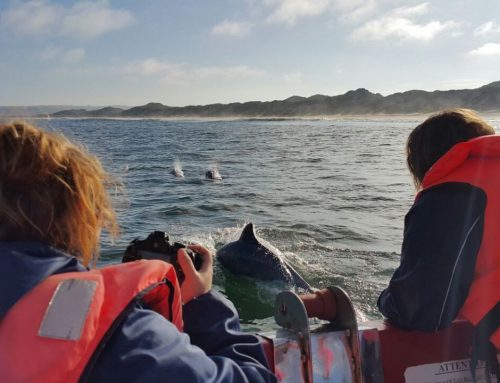Processed foods are the commodity group with the highest freight carbon footprint on South Africa’s major road corridors: the Gauteng-Cape Town corridor and the Gauteng-Durban corridor.
This is according to data published by WWF-SA in: Low Carbon Frameworks: Transport: Understanding Freight Emissions.
‘Based on this, we commissioned a freight transport model, completed this year, to specifically look at the shift from road to rail of processed foods along the Cape Town to Gauteng corridor,’ says Louise Naudé who heads up the WWF-Nedbank Green Trust Transport Low-carbon Frameworks programme.
The project chose to focus on transport because it is a key economic sector and contributor to South Africa’s emissions, second only to energy production.
The project’s mandate is to research and model low-carbon solutions for the South African transport sector, both passenger and freight. In the freight sector, it is looking at carbon emissions i.e. those gases that contribute to climate change for road versus rail freight.
‘Processed foods such as tinned foods comprise the single biggest freight category giving rise to emissions on the Cape Town to Gauteng corridor. Shifting this category to rail provides the biggest opportunity for reducing GHG emissions from freight transport in South Africa,’ explains Naudé.
Several factors make this an achievable initiative: the railway network on this route is intact, the goods are “rail friendly”, not being perishable nor temperature sensitive, and the volumes of are potentially financially viable.
‘Transnet’s 2012 Long-term Planning Framework shows that road freight is far more emissions-intensive than rail, with rail only accounting for 8% of freight emissions despite accounting for 30% of freight activity,’ continues Naudé.
Road freight along corridors (the main transport links between cities) contributes over 45.3% of freight emissions (21.6% on the N1 and N3, and 23.7% on other corridors (like N2).
This is followed by rural road freight (within the rural areas), which accounts for close to 30% of freight emissions, and metropolitan road freight (within cities), which accounts for almost 20% of freight emissions.
‘In looking at processed foods as a target commodity for a shift to rail, we spoke to processed food companies, logistics companies, road freight operators, labour and Transnet, which has been a fantastic experience, with great willingness all round to work with us on the project,’ says Naudé.
Barriers that need to be overcome include the slowness, lack of punctuality and unreliability of the rail service.
At present, the goods trains are not leaving the station until they are full. You cannot tell a cargo owner that in two days their processed food delivery might be in Gauteng; they need specific arrival dates and times because it affects all sorts of logistics, including the timing of truck arrivals at the railway station for collection.
Other logistical issues that need refining from the cargo owners’ side include their distribution networks. At the moment a high volume of goods arriving at the ports are then being trucked to distribution centres in Gauteng and dispatched all over the country from here. This is counterproductive from an emissions perspective.
‘If we can solve these and other barriers of getting processed foods and other goods onto rail, the benefit to the economy, to climate change mitigation and water use are considerable,’ says Naudé. ‘We have constructed a ‘systems dynamics’ model which allows us to put planning, regulatory, economic and technological measures into the system, and see what impact they have and how they interact – unintended consequences, feedback loops, trade-offs. For example, regulation requiring a greater proportion of biofuels in trucks may reduce emissions but have adverse impacts on our water use.’
One of the measures modelled is a carbon tax. ‘We all pay the social and economic price of carbon emissions and the heavy use of our roads – in climate change impacts, costs of road maintenance, accidents, and time delays due to congestion. We are convinced of the need to put a price on carbon and believe government is committed to this. Reducing a business’s exposure to a carbon tax is an incentive to move to rail. We have modelled a carbon tax based on Treasury’s last proposal of R120 per tonne of emissions, but the model allows one to set it to any value and see what happens,’ explains Naudé.
Naudé’s team will be analysing what the model reveals in 2015. The model will be open source online, so that anyone can change the parameters to reflect their own decision-making and knowledge, and explore “what ifs”.
The general prognosis is that we have to get our rail system back and operating at optimum efficiency. We have to reinvest not only in the hard infrastructure and rolling stock but also to manage rail cargo for best intermodal efficiency at large inland ports.
Transnet is significantly investing in creating the infrastructure and service to re-attract freight to rail, but there is a bit of a chicken-and-egg situation. Primary resources such as coal, iron and minerals are currently the backbone of their income, whereas if we can get more of products like processed foods to shift to rail, then Transnet would have a business case to invest further.
It’s so important from a carbon emissions/climate change action perspective.
The climate change movement in South Africa has gained incredible momentum of late and has joined forces with the international movement.
The Intergovernmental Panel on Climate Change (IPCC) says that climate change is happening faster and more seriously than previously thought.
To stand a 66% chance of containing global warming below 2 degrees C, the IPCC has calculated that the world can afford to emit no more than 1 000 billion tons of CO2. This sounds like a lot but is not, since this will be emitted in less than 20 years at the present rate of emissions.
Worldwide we are seeing increasing calls for disinvestment from fossil fuels and the World Bank has committed to make no new investment in coal-fired power stations, except where poor countries can argue that they have no alternatives.
‘The big picture of the work that we are doing in the transport sector is about economic and social sustainability, let alone the survival of our planet. This is not a “green” issue, it is a development issue,’ concludes Naudé who has led several workshops with labour organisations in South Africa around the shift to a climate-friendly economy and the need for decent green jobs.
Info bites:
Emissions from transport in South Africa account for over 12% of South Africa’s total CO2 emissions (carbon emissions) that cause global warming. Significantly, about 68% of this is from the combustion of diesel and petrol on our roads.
Understanding Freight Emissions ‑ a succinct document produced by WWF – can be accessed on: www.wwf.org.za/understanding_freight_emissions
What is a carbon budget
A carbon budget can be defined as a tolerable quantity of greenhouse gas emissions that can be emitted in total over a specified time. The budget needs to be in line with what is scientifically required to keep global warming and thus climate change “tolerable.”
If we want to avoid the worsening impacts of climate change, the temperature has to stay within limits, and so we cannot emit more than a certain amount of emissions. This is our global carbon budget. It is a global budget because emissions from anywhere on earth go into the atmosphere we all share.
Why we need a carbon budget
The Intergovernmental Panel on Climate Change’s 5th Assessment Report, for the first time, discusses and identifies various carbon budgets, which contain the amount of CO2 and GHG emissions permissible by all nations between now and 2050/2100 for various temperature increase scenarios with various probabilities (33% ‑ 66%).
To stay below 2 degrees C compared to pre-industrial temperatures, as an average number of the various low-carbon/2-degree scenarios, the IPCC concludes that the world has less than 1 000 billion tons of CO2 left to fill the atmospheric space.
The budget for not exceeding 1.5 degrees C is even lower. Hence the suggestion that in the not-so-distant future, ‘negative’ emissions needs to occur. This then raises concerns around land use, geoengineering, and safety of carbon storage. The faster we manage to achieve a full decarbonisation ‑ such as WWF’s position supporting 100% renewables of the energy sector by mid-century ‑ the smaller the various associated risks.




